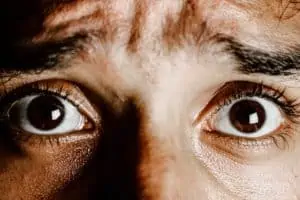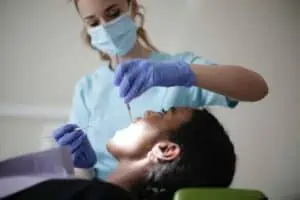Overall Health
February 9th is Toothache Day
February 9th might seem like just another day in the midst of winter, but it’s also a special day for your dentist in Sparks. It’s Toothache Day. While most people would prefer to celebrate love and romance during the month of February, acknowledging the discomfort and often bad timing of a toothache may seem like an odd choice. However, considering just how common toothaches are, dedicating a day to raise awareness about them is not only relevant but also crucial.
Origins of Toothache Day
The origins of Toothache Day are somewhat unclear, but its observance can be linked to the need for increased awareness about dental hygiene. Many dental associations and healthcare professionals leverage this day to educate the public on the importance of the role of regular dental check-ups, proper oral hygiene practices, and nutrition in maintaining healthy teeth and gums. Afterall, toothaches can often be prevented or stopped quickly in their tracks.
Prevention is Key
Preventing toothaches starts with adopting good oral hygiene habits. Brushing and flossing daily as well as seeing your dentist in Sparks at least every six months are the foundations of a healthy dental routine. Toothache Day serves as a gentle nudge for individuals to reassess their oral care habits and make necessary adjustments.
Regular Dental Check-ups
One of the most effective ways to prevent toothaches is through regular dental check-ups. Dentists can detect potential issues early on, preventing them from developing into painful conditions. Toothache Day encourages people to schedule routine dental appointments and prioritize their oral health.
The Role of Nutrition
A balanced diet plays a crucial role in maintaining healthy teeth and gums. Toothache Day is the perfect time to reflect on dietary choices and their impact on oral health. Foods rich in calcium, vitamin D, and phosphorus contribute to strong teeth and bones. On the other hand, excessive consumption of sugary and acidic foods can lead to tooth decay and cavities.
Temporary Toothache Relief
Individuals experiencing toothaches can turn to various home remedies for temporary relief. Emphasis on temporary. It’s always important to see your dentist in Sparks as soon as possible if you have a toothache. In the meantime, try the following.
- Rinse with Saltwater to help reduce inflammation and get relief from pain.
- Apply a Cold Compress to help numb the pain and reduce swelling.
- Use Over-the-Counter Pain Relievers like ibuprofen or acetaminophen to help alleviate pain and reduce inflammation.
- Try Clove Oil for temporary relief. Clove oil is known for its natural analgesic properties.
Toothache Day on February 9th is not just a quirky observance; it serves a valuable purpose in promoting oral health awareness. By taking a day to acknowledge the discomfort of toothaches, we can collectively work towards a healthier and pain-free future. Let this day be a reminder to prioritize our oral well-being, seek professional help when needed, and embrace the journey towards healthier smiles.
During your dental check ups, it’s common to see both your hygienist and dentist in Sparks. Ideally, these check ups happen twice a year so your dental team can keep a close eye on your oral health and catch any problems early before they have a chance to become a bigger, more serious problem, and while they’re still usually treated easily. But what exactly do your dentist and dental hygienist do during check ups?
Health Updates
Before any type of dentistry begins, your dental team will get an update on your overall and oral health. They’ll want to gather information such as if there has been any changes to medications or newly diagnosed conditions. It’s important to be honest during this conversation as many whole-health problems are also linked to oral health, so the more your dentist knows, the better care they can provide. You should also mention any concerns you may have about your oral health such as any pain, sensitivity, or cosmetic services you may be interested in.
First Steps During an Appointment
While the order of how things happen during your appointment may vary depending on the office, the following is a typical outline of what happens during the first stage of a dental check up.
- Initial Exam
Your dental hygienist may begin your appointment by taking a peek inside your mouth and looking at your teeth and gums. They’re looking for any signs of gum swelling or redness as well as any visual areas of decay. Additionally, some hygienists will also measure gum pockets to monitor for gum disease.
- Cleaning
Next, your hygienist will get to work thoroughly, yet gently, cleaning your teeth. This is a more in depth process than brushing and flossing at home. Special tools are used to remove plaque and tartar buildup from your gums and teeth, which can’t be done at home. They may also gently poke at teeth to check for cavities.
- Polishing
Following your cleaning, your hygienist will polish off your pearly whites using a special tool and paste. Polishing can help remove leftover plaque from your teeth and can even remove surface tooth stains.
- X-Rays
Dental x-rays don’t usually happen at every check up, but they will be taken if it’s been a year or more since your last radiographs or if your dental team needs to see below the surface of your teeth to more closely check out any areas of concern. Dental x-rays are safe and emit very low levels of radiation.
Meeting with Your Dentist in Sparks
After your hygienist conducts an initial exam, cleans your teeth, and takes any necessary x-rays, your dentist will come in to check things out. If there are any areas of concern, they’ll take a closer look at the area and any accompanying x-rays or images. Your dentist will also evaluate your jaw, bite, and teeth for any signs of decay.
Dental health can change quickly, so it’s important to get a check up every six months. If you’re overdue, schedule an appointment with your dentist in Sparks today.
If you’re embarrassed by your teeth, you’re not alone. More than 50% of Americans are insecure about their teeth. This may mean that you cover your mouth when you laugh or smile without your teeth showing in photographs. A lot of the time, smile insecurity is due to the color of teeth. While many things can cause tooth staining, your dentist in Sparks wants you to know that there are several ways you can stop tooth staining in its tracks.
Stop Smoking
One of the main things that cause tooth discoloration is smoking and using other forms of tobacco. Tobacco, along with other ingredients in cigarettes and even smokeless tobacco, is known to cause the yellowing of teeth. Additionally, since tobacco products also contain addictive ingredients, it’s not uncommon for these products to be used several times throughout the day. This means that teeth are constantly exposed to the staining ingredients. Additionally, tobacco stains are harder to remove. While your dentist in Sparks supports quitting smoking and using other tobacco products, we understand that they are difficult to quit. Keep in mind that tobacco use is a leading cause of oral health problems, including oral cancer.
Eat Healthy
Certain foods and drinks such as red wine, tea, coffee, soda, and even pasta sauce can cause tooth staining. But there are also some foods that can actually help reduce staining. Snacking on raw vegetables and fruits such as apples, celery, or even some types of cheese can gently scrub away surface stains.
Brush Your Teeth Often
Your dentist in Sparks will always recommend that all patients brush their teeth twice a day, every day, for two minutes. However, brushing your teeth after meals, particularly the ones that can contribute to tooth staining, is also important. If you can’t thoroughly brush your teeth, try rinsing your mouth out with water to help remove staining ingredients.
If you find yourself in a position where you can’t rinse your mouth out with water, find some sugarless gum and chew it for a little while to remove even more food particles.
Straws Can Help
While it may seem silly, a simple straw is a great way to reduce the risk of tooth discoloration when drinking a tooth-staining beverage. Straws help the liquid bypass teeth and decrease the likelihood of staining. There are several reusable straws you can buy and carry with you in case you run into a situation where straws aren’t available.
To be frank, tooth discoloration happens, sometimes even if you try your hardest to prevent it. But the good news is that there are several cosmetic dentistry options available for whitening teeth and even reversing discoloration. From smile whitening treatments to cosmetic dentistry solutions, like dental veneers, your dentist in Sparks will help you find the best way to whiten your teeth.
Everyday things such as coffee, wine, and even spaghetti sauce can take a once bright, white smile and transform it into something discolored. If you were once used to brilliant white teeth and find yourself staring into the mirror and wondering when your teeth went from dazzling to dull, you’re not alone. In fact, more than half of Americans are insecure about their teeth. The good news is that there are many different ways to whiten your smile. The most common way is over-the-counter whitening strips. However, your dentist in Sparks wants you to know the benefits and risks that go along with the use of whitening strips.
Whitening Strips: 101
Whitening strips are thin pieces of plastic covered with an active whitening ingredient. Some of the active ingredients can include hydrogen peroxide, sodium hydroxide, or chlorine dioxide. When in doubt, look for a product that offers no more than 14% of hydrogen peroxide and steer clear of anything that has chlorine dioxide – it can irreversibly damage tooth enamel. Additionally, it’s crucial to follow package instructions accurately. Whitening strips that are used too often or left on too long can cause unwanted side effects, and there’s no benefit to doing so.
What To Know Before Buying Whitening Strips
There are so many different kinds of whitening strips available to you. You can buy them almost anywhere – from your local grocery store to online without ever consulting your dentist in Sparks. However, we encourage you to first talk with your dentist before spending any money on whitening strips. After all, whitening strips are only effective at removing surface stains and not internal stains, and it’s hard to know the difference between the two without a professional opinion.
Risks of Whitening Strips
While whitening strips can be effective at removing surface stains, they don’t come without their risks. Some risks of using whitening strips can include:
- Gum Irritation – Whitening strips that contain hydrogen peroxide can whiten teeth, but if too much of the whitening strips touch too much of the gums for too long it can cause damage. Whitening strips can result in gum swelling and bleeding if used incorrectly.
- Splotchy Whitening – While whitening strips often use ingredients to effectively stick them to teeth, patchy or splotchy whitening can occur. This can make discoloration even more obvious than it was before.
- Sensitivity – Perhaps the most common side effect of whitening strips is tooth sensitivity. Sensitivity can have symptoms such as fast zaps of pain through teeth and pain when eating or drinking something hot or cold.
Are Whitening Strips Right For You?
The absolute best way to make sure you’re investing your money into something that will give you the results you want is to first talk with your dentist in Sparks. They can help determine the origin of your tooth staining and recommend the best way to whiten your smile that will give you the results you want.
It’s a well-known fact that smoking can affect your lungs, heart, and other parts of your body. But did you know that smoking can also cause trouble with your oral health? In fact, smokers are at increased risk for several diseases and complications that affect the mouth, teeth, and gums. In celebration of the Great American Smokeout, which aims to help current smokers make a plan to quit, your dentist in Sparks wants to share a few ways that smoking can put your oral health at risk.
How Does Smoking Affect Oral Health?
Not only does smoking increase the likelihood of developing serious overall health problems such as certain cancers, but it can also cause damage to your oral health.
- Tooth Staining
Cigarettes contain a boatload of ingredients, chemicals, and carcinogens, which is anything that is known to cause cancer. But each cigarette also contains nicotine, the addictive ingredient, and tar in the tobacco. Both nicotine and tar can cause tooth staining. Smokers’ teeth may be noticeably yellow or can have brown spots.
- Gum Disease
Besides the negative cosmetic side effects of smoking, there are real health risks associated with smoking. One of those risks is gum disease. Gum disease is a serious infection in the gums that may display signs of red, swollen, painful gums, or gums that bleed during brushing or flossing. But that’s not all. Gum disease has also been linked to various whole-health issues including heart disease, respiratory infections, dementia, and diabetes.
- Tooth Loss
While we’re on the topic of gum disease, it’s important to note that it’s also one of the leading causes of tooth loss. Since people who smoke are more likely to get gum disease, it means they’re also more likely to experience tooth loss. One of the worst parts about gum disease is if it’s not caught early, the infection can be irreversible. This is one reason why it’s so important to see your dentist in Sparks regularly so they can check for early signs of gum disease and treat it quickly.
- Oral Cancer
Perhaps the most common word associated with smoking is cancer. Any type of cancer diagnosis can be scary, including oral cancer. According to the American Lung Association, smokers are ten times more likely to develop oral cancer than non-smokers. But it’s not just cigarettes that can increase this risk. Smokeless tobacco, cigars, and pipe tobacco all contain cancer-causing carcinogens and can increase the risk of oral cancer.
Making a plan to quit smoking and utilizing the resources available to you can help make what may now seem like the impossible, possible. If you are interested in quitting, let your dentist in Sparks help you learn how you can start improving your oral health the minute you put out that last cigarette.
Pointy canine teeth may be a good look for a vampire. But if you’re one of the many people whose canines are pointier than you’d like, we want you to know that there are various ways that your dentist in Sparks can use cosmetic dentistry techniques to reshape your teeth and revitalize your smile.
All About Canine Teeth
Canine teeth are those four teeth in the top and bottom of our mouths that are naturally pointy in shape. Some people refer to them as vampire’s teeth, and they can somewhat look like dogs’ teeth, hence the name canine. The unique shape of the canine teeth helps us eat by allowing us to tear, hold, and chew food. But if you think your canines are too long or too pointy, let’s check out a few ways your dentist in Sparks can help.
3 Ways to Change The Shape of Teeth
Cosmetic dentistry isn’t only meant for people who want to get a brilliantly white smile. In fact, it can fix a whole bunch of aesthetic concerns. Three of the best ways to fix pointy teeth through cosmetic dentistry are:
- Bonding
- Veneers
- Recontouring
Bonding
Dental bonding is the most conservative way a dentist can change a tooth’s appearance. The treatment involves applying a tooth-colored material to a tooth and sculpting it into an ideal size and shape. Bonding can also fix chipped teeth, slightly overlapped teeth, and even crooked teeth.
Veneers
Dental veneers are thin pieces of porcelain that are attached to the front surface of teeth. They can cover up discoloration, fill in gaps, and change the size or shape of teeth. The procedure requires your dentist to remove a small portion of enamel for the veneer to fit. But after that, you’re left with a new, natural look.
Recontouring
Another way your dentist in Sparks can change the shape of your teeth is through tooth recontouring. This quick and easy treatment allows your dentist to use an artistic eye to gently remove tooth enamel to alter the size or shape of a tooth. Only a few millimeters of enamel are removed so it’s a painless procedure.
Changing the look of your smile doesn’t need to be complicated or expensive. Start your smile makeover journey by talking with a dentist about your options.

Prior Dental Experiences
A study published in the National Library of Medicine found that many people who are scared of the dentist can trace their fear back to a negative experience, usually one that occurred during childhood. Now, this doesn’t necessarily mean that the dentist was bad. In fact, more research suggests that there is a correlation between the type and amount of dental treatment a child has had and the severity of their dental anxiety. For example, a child that had multiple serious treatments such as extractions is more likely to have dental fear later in life than kids who visit the dentist regularly and experience ongoing preventive care.
Learned Behavior
Even if someone personally didn’t have a negative experience in the dental chair growing up, they may still have a fear of seeing their dentist in Sparks due to learned behavior or mindset from a parent, sibling, or another close acquaintance. This is one reason why it’s so important to speak positively about seeing a dentist (or any doctor for that matter) around kids and others.
White Coat Syndrome
Occasionally, some people have a negative body reaction whenever they visit a dentist or medical doctor. This can be known as white coat syndrome. White coat syndrome can cause a spike in blood pressure whenever in a doctor’s office. An increase in blood pressure can cause someone to feel uneasy, hence the feeling of being scared of the dentist.
Personality Traits
The same National Library of Medicine study from above also examined two types of personality traits and how they may relate to dental fear. The two traits were:
- Extraversion – warm, excitement-seeking, assertive
- Neuroticism – anxious, self-conscious, showing depressive symptoms
The scientists found that those two traits may have a correlation to dental anxiety with neuroticism being more likely to experience dental fear.
Overcoming Dental Fear
We understand that fear is a very real feeling for many people. But there are some tricks you can try to help overcome dental fear such as:
- Using relaxation techniques
- Asking about the use of sedation dentistry
- Finding the right dentist that makes you feel comfortable
- Listening to music
- Talking with your dental team about your fears and communicating often
Being relaxed and comfortable when you visit your dentist in Sparks is important for many reasons. One of those reasons is that you will be more likely to keep up with appointments every six months, which can go a long way in keeping your teeth healthy and reducing the need for complex treatment.
If you’re overdue for a dental appointment, talk with us. We’re here to help you keep you relaxed and at ease, and the more we know about your fear the better we can assist you.
What we eat and drink can certainly affect our overall health. But did you know they can also affect dental health? Some beverages are beneficial for teeth while others can wreak havoc in your mouth. Tune in as your dentist in Sparks talks about which drinks you should enjoy regularly and which you should avoid or drink in moderation to protect your teeth.
Soda
This shouldn’t come as a surprise, but soda of any kind is bad for your teeth. This also includes sugar-free options. Soda is typically loaded with sugar, but that’s not the only problem. It’s also acidic and can weaken tooth enamel, making it easier for bacteria to attack teeth and create cavities. In fact, studies show that even diet soda or sugar-free options can still break down enamel thanks to the acid.
Fruit Juice & Fruit Punch
Drinking something with fruit right in the name may seem like a healthy option, but this can be deceiving. Most commercial fruit juices contain added sugars and are made from concentrate, not actual fruit juice. If you can find an option that is 100% fruit juice and doesn’t have added sugars, it’s an ok option. Fruit punch on the other hand isn’t actually juice or fruit at all. They’re mostly sugar and acidic.
Alcohol
Not all alcohol is necessarily bad for teeth if enjoyed in moderation. Early studies on beer, for example, may show a beneficial effect on teeth because of the hops. More research is needed to be sure. But other alcoholic drinks like wine are often acidic and can weaken enamel. Alcohol is also naturally drying, so it can easily dry out the mouth. A dry mouth is a haven for bacteria to thrive.
Sports Drinks
Often marketed as a great option for active people, sports drinks are high in sugar and are also acidic. As we’ve mentioned, this duo can be dangerous to teeth and increase the risk of dental problems.
What To Choose Instead
When it comes to choosing the best beverages for your family, there are some great options available that can quench your thirst and benefit your oral health.
Water
Your dentist in Sparks can’t stress the importance of drinking enough water every day. This not only helps keep your body hydrated, but it also helps wash away bacteria, neutralize acid, and promotes saliva production.
Milk
We all know that milk helps build strong bones, but it can also help build strong teeth and keep them strong. Milk contains calcium, phosphorus, and vitamin D, all of which are beneficial for teeth. Milk also contains caseins, a protein that forms a protective barrier on teeth to keep bacteria and acids away. However, because milk also contains sugar, your dentist in Sparks recommends drinking milk in one sitting and not over a period of time.
Tea
Even though drinking too much tea can stain your teeth and make you explore teeth whitening options, it does have some health benefits. Black and green tea in particular may inhibit the growth of bacteria and help keep decay away. Tea can also decrease acid production which can protect teeth even more. However, keep in mind that these studies were for unsweetened tea. Any sweetener from sugar to natural honey can encourage decay.
To help protect your teeth against decay, choose what you drink wisely. If you do indulge in beverages that aren’t so great for your smile, especially acidic ones, try to use a straw and wait at least 20 minutes after drinking to brush your teeth.

What is Sleep Apnea?
Sleep apnea is a condition that occurs when a person stops breathing while sleeping. This can happen for a few seconds or longer, and you may not even know it’s happening. Interruptions in breathing during sleep can cause oxygen levels to drop and carbon dioxide levels to rise, making sleep and rest difficult to achieve.
Know The Signs
Signs and symptoms of sleep apnea may appear during sleep as well as when you are awake. Pay attention to your sleep habits and how you feel while awake, and keep an eye out for:
During Sleep
- Snoring
- Mouth breathing
- Difficulty staying asleep
- Pauses in breathing or gasping for breath
While Awake
- Irritability
- Sleepiness
- Morning headaches
- Waking up with a dry mouth
If you notice any of the signs of sleep apnea, schedule an appointment with your dentist in Sparks.
Causes
Sleep apnea occurs when the throat muscles relax so much during sleep that they block the airway, making breathing difficult. This can happen for a number of reasons:
- Obesity
- Family history
- Nasal congestion
- Large tonsils or adenoids
Other risk factors that can make someone more prone to developing sleep apnea include high blood pressure, type 2 diabetes, Parkinson’s disease, and smoking.
How is Sleep Apnea Diagnosed?
The first step in getting a proper diagnosis is to see your dentist in Sparks for an evaluation. The next step can vary depending on your symptoms and exam. The following step may include tests such as a sleep study, measurement of oxygen levels overnight, or an electrocardiogram. Your dentist may also examine the size of the tonsils.
Treating Sleep Apnea
Treatment varies from patient to patient and can range from:
- Medications such as nasal spray or allergy medicine
- Tonsil or adenoid removal
- CPAP machine
- Oral appliance
Sleep apnea can be scary, but treatment is available. If you’re experiencing symptoms of sleep apnea or you share a bedroom with someone who has symptoms, consider talking with your dentist. Come prepared with symptoms and a log of when you notice them as well as any family history of sleep apnea.
Each and every February, loved ones throughout the United States go above and beyond preparing for Valentine’s Day. Whether you choose to show your love with chocolates or flowers, one thing remains constant — bright red hearts are everywhere we look. But there’s another reason (besides Valentine’s Day) that we should pay attention to these hearts. February is American Heart Health Month and focuses on raising awareness of how daily choices affect our risk of heart disease. In fact, this holiday has a special place in your Sparks dentist’s heart because there is a strong connection between oral health and heart health.
What is Gum Disease?
Gum disease is an infection in the gum tissues usually caused by a buildup of bacteria and plaque. When someone doesn’t brush their teeth often enough or well enough, plaque is left behind and can easily work its way up under the gum, settle in, and cause trouble.
There are four stages of gum disease including:
- Gingivitis
- Slight Periodontal Disease
- Moderate Periodontal Disease
- Advanced Periodontal Disease
Gum disease can be treated if caught in the gingivitis stage, so make sure you visit your dentist in Sparks every six months for dental cleanings, x-rays, and thorough exams so we can identify any problems early.
What Does This Have to Do With Your Heart?
If gingivitis isn’t diagnosed and treated quickly it will progress into slight, moderate, or advanced periodontal disease, all of which are irreversible. When gum disease progresses into these advanced stages, the infection can enter the bloodstream and travel throughout the body. This can affect areas outside of the mouth, including the heart.
Heart Disease
Bacteria from gum disease in the bloodstream causes the body to produce too much C-reactive protein (CRP). Higher than normal levels of CRP can lead to serious conditions such as:
- Inflamed arteries
- Blood clots
- Heart attacks
- Strokes
Knowing that your oral health can have such an impact on your overall wellness makes it so incredibly important that you practice good oral hygiene habits at home, including brushing twice a day for two minutes and flossing every day.
Signs of Gum Disease
Since early diagnosis is so crucial to treating gum disease before it has the chance to affect the rest of your body, you need to know the signs of gum disease. Keep an eye out for:
- Bleeding when brushing or flossing
- Puffy, tender gums
- Bad breath
- Loose teeth
If you notice any of the signs of gum disease, call your dentist in Sparks to schedule an appointment. This American Heart Health Month, commit to reducing your chances of heart disease by brushing and flossing every day, seeing your dentist in Sparks twice a year, exercise, and eat a healthy diet. For more ideas on how to live a heart-healthy life, visit the National Heart, Lung, and Blood Institute.







